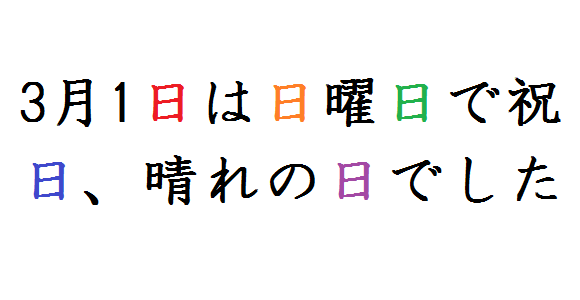
Amazing versatility shows the depth and difficulty of the Japanese writing system.
Most people will tell you that the most difficult thing about learning Japanese is dealing with kanji, the written characters originally imported from China. Not only are there more than 2,100 general-use kanji, some of them are incredibly complex, even the ones with rather mundane meanings.
For example, this 27-stroke monster…
…is what you have to write out if you want to use the kanji for suzuki, or “sea bass.”
Thankfully, sometimes the Japanese language throws you a bone, with kanji that show up incredibly frequently also being a snap to write. For example, the kanji meaning “sun” or “day” only has four strokes, and isn’t much more difficult to write than the numeral 8.
But just because a kanji is easy to write doesn’t mean it’s simple to read. Kanji represent concepts, not sounds, and since they were originally brought over from a different language, they can be read with a corrupted version of their original Chinese pronunciation, an indigenous Japanese pronunciation, or an irregular pronunciation that came about as a force-fit of assigning kanji with an appropriate meaning to preexisting Japanese vocabulary. Driving home that point is this tweet from Japanese Twitter user @DNApro_mikokoro, which contains a sentence in which the 日 kanji shows up five times…
この文章、読めますか?
— 佐野美心 (@DNApro_mikokoro) March 16, 2017
「3月1日は日曜日で祝日、晴れの日でした」
おそらく皆さんほとんど読めたと思いますが
実はこの文、海外の日本語学校では超難問です
気づかれましたか?「日」の字の読み方全部違うのです
…and is pronounced five different ways!
Let’s break them all down.
● In 1日/tsuitachi, meaning “the first of the month,” the pronunciation of 日 is part of an unbreakable set with the numeral one
● In 日曜日/nichiyoubi, meaning “Sunday,” the first instance of 日 is pronounced nichi and the second bi
● In 祝日/shukujitsu, meaning “holiday,” 日 is pronounced jitsu
● And finally, all by itself, the fifth time 日 shows up it’s pronounced hi, meaning “day”
Put it all together, and “3月1日は日曜日で祝日、晴れの日でした” is read “Sangatsu tsuitachi ha nichiyoubi de shukujitsu, hare no hi deshita,” which translates into “March 1 was Sunday, a holiday, and a sunny day.”
By the way, look close enough and you’ll notice that two more of the kanji in the sentence, the yo part of nichiyoubi (曜) and the ha portion of hare (晴), both have miniature versions of the 日 kanji as part of their components, in keeping with their respective meanings of “day of the week” and “sunny.”
“I think everyone [who’s Japanese] could read the sentence,” tweeted @DNApro_mikokoro, which is a totally reasonable assumption, as all of the vocabulary and kanji are pretty rudimentary by native-Japanese standards, who are used to their language’s heavy reliance on context for meaning. “But this is a really tough task for students studying Japanese overseas,” @DNApro_mikokoro continued.
Still, if you want to learn the language, it’s one of the hurdles you’ll have to get over. Keep at it, and remember that while some parts of Japanese can be hair-pullingly aggravating at first glance, it’s not all bad news.
Source: Hachima Kiko
Images ©RocketNews24
Follow Casey on Twitter, where he’d be happy to talk about Japanese linguistics all day.

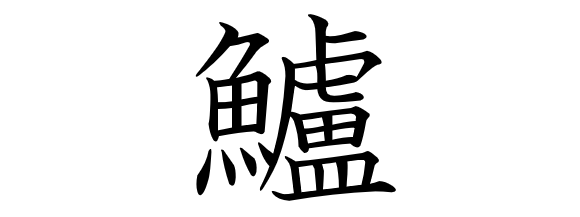


 Four new era names the Japanese government rejected before deciding on Reiwa
Four new era names the Japanese government rejected before deciding on Reiwa Foreigners misreading Japanese kanji of “two men one woman” is too pure for Japanese Internet
Foreigners misreading Japanese kanji of “two men one woman” is too pure for Japanese Internet What’s funnier and more likely to make you study than poo? How about male pattern baldness?
What’s funnier and more likely to make you study than poo? How about male pattern baldness? Japanese study tip: Imagine kanji characters as fighting game characters, like in this cool video
Japanese study tip: Imagine kanji characters as fighting game characters, like in this cool video W.T.F. Japan: Top 5 most difficult kanji ever【Weird Top Five】
W.T.F. Japan: Top 5 most difficult kanji ever【Weird Top Five】 Japan has nearly 4 million abandoned homes, but where and why?
Japan has nearly 4 million abandoned homes, but where and why?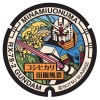 Awesome new Gundam manhole covers coming to Japanese prefecture for first time
Awesome new Gundam manhole covers coming to Japanese prefecture for first time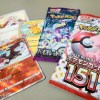 Yakuza lieutenant arrested in Tokyo for stealing Pokémon cards
Yakuza lieutenant arrested in Tokyo for stealing Pokémon cards We save money on crotchless jeans from Japanese brand Beams by making our own
We save money on crotchless jeans from Japanese brand Beams by making our own Two things to do, and two things not to do, when leaving a traditional Japanese inn
Two things to do, and two things not to do, when leaving a traditional Japanese inn McDonald’s Japan’s new pancake pie is a taste sensation
McDonald’s Japan’s new pancake pie is a taste sensation McDonald’s new Happy Meals offer up cute and practical Sanrio lifestyle goods
McDonald’s new Happy Meals offer up cute and practical Sanrio lifestyle goods Starbucks at Shibuya Scramble Crossing reopens, but is it really bigger and better than before?
Starbucks at Shibuya Scramble Crossing reopens, but is it really bigger and better than before? FUK COFFEE?!? Japanese cafe has a perfectly innocent reason for its startling-looking name
FUK COFFEE?!? Japanese cafe has a perfectly innocent reason for its startling-looking name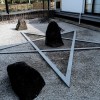 Abe Monjuin: An ancient temple with a connection to stars and astrology…and National Treasures
Abe Monjuin: An ancient temple with a connection to stars and astrology…and National Treasures Foreigner’s request for help in Tokyo makes us sad for the state of society
Foreigner’s request for help in Tokyo makes us sad for the state of society Bad tourist manners at Mt Fuji Lawson photo spot prompts Japanese town to block view with screens
Bad tourist manners at Mt Fuji Lawson photo spot prompts Japanese town to block view with screens One of Japan’s oldest castles now lets travelers spend night on the grounds, drink in its keep
One of Japan’s oldest castles now lets travelers spend night on the grounds, drink in its keep Japanese city loses residents’ personal data, which was on paper being transported on a windy day
Japanese city loses residents’ personal data, which was on paper being transported on a windy day Studio Ghibli unveils new goods that tip the hat to The Cat Returns
Studio Ghibli unveils new goods that tip the hat to The Cat Returns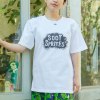 Studio Ghibli unveils massive T-shirt collection featuring top anime movie characters
Studio Ghibli unveils massive T-shirt collection featuring top anime movie characters Japanese-style accommodation at the new Premium Dormy Inn hotel in Asakusa will blow your mind
Japanese-style accommodation at the new Premium Dormy Inn hotel in Asakusa will blow your mind New definition of “Japanese whiskey” goes into effect to prevent fakes from fooling overseas buyers
New definition of “Japanese whiskey” goes into effect to prevent fakes from fooling overseas buyers Our Japanese reporter visits Costco in the U.S., finds super American and very Japanese things
Our Japanese reporter visits Costco in the U.S., finds super American and very Japanese things Japanese ramen restaurants under pressure from new yen banknotes
Japanese ramen restaurants under pressure from new yen banknotes All-you-can-drink Starbucks and amazing views part of Tokyo’s new 170 meter-high sky lounge
All-you-can-drink Starbucks and amazing views part of Tokyo’s new 170 meter-high sky lounge More foreign tourists than ever before in history visited Japan last month
More foreign tourists than ever before in history visited Japan last month New Pokémon cakes let you eat your way through Pikachu and all the Eevee evolutions
New Pokémon cakes let you eat your way through Pikachu and all the Eevee evolutions Disney princesses get official manga makeovers for Manga Princess Cafe opening in Tokyo
Disney princesses get official manga makeovers for Manga Princess Cafe opening in Tokyo Sales of Japan’s most convenient train ticket/shopping payment cards suspended indefinitely
Sales of Japan’s most convenient train ticket/shopping payment cards suspended indefinitely Sold-out Studio Ghibli desktop humidifiers are back so Totoro can help you through the dry season
Sold-out Studio Ghibli desktop humidifiers are back so Totoro can help you through the dry season Japanese government to make first change to romanization spelling rules since the 1950s
Japanese government to make first change to romanization spelling rules since the 1950s Ghibli founders Toshio Suzuki and Hayao Miyazaki contribute to Japanese whisky Totoro label design
Ghibli founders Toshio Suzuki and Hayao Miyazaki contribute to Japanese whisky Totoro label design Doraemon found buried at sea as scene from 1993 anime becomes real life【Photos】
Doraemon found buried at sea as scene from 1993 anime becomes real life【Photos】 Tokyo’s most famous Starbucks is closed
Tokyo’s most famous Starbucks is closed One Piece characters’ nationalities revealed, but fans have mixed opinions
One Piece characters’ nationalities revealed, but fans have mixed opinions We asked a Uniqlo employee what four things we should buy and their suggestions didn’t disappoint
We asked a Uniqlo employee what four things we should buy and their suggestions didn’t disappoint Japan announces Kanji of the Year for 2019, and it was really the only logical choice
Japan announces Kanji of the Year for 2019, and it was really the only logical choice Kanji Tetris is the coolest way to practice and play with Japanese that we’ve ever seen【Video】
Kanji Tetris is the coolest way to practice and play with Japanese that we’ve ever seen【Video】 “Gold” named 2016 Kanji of the Year
“Gold” named 2016 Kanji of the Year The 10 most attractive Japanese women’s names, as chosen by dating app users
The 10 most attractive Japanese women’s names, as chosen by dating app users Japan’s top baby names for 2015: Will Naruto-influenced monikers still reign supreme?
Japan’s top baby names for 2015: Will Naruto-influenced monikers still reign supreme? Twitter users say Japanese Prime Minister’s name is hiding in the kanji for Japan’s new era name
Twitter users say Japanese Prime Minister’s name is hiding in the kanji for Japan’s new era name Japan’s Kanji of the Year revealed, reflects both the good and the bad of 2022
Japan’s Kanji of the Year revealed, reflects both the good and the bad of 2022 Watch this renowned Japanese calligrapher effortlessly write “the hardest kanji ever”【Video】
Watch this renowned Japanese calligrapher effortlessly write “the hardest kanji ever”【Video】 Renowned Japanese calligraphy teacher ranks the top 10 kanji that foreigners like
Renowned Japanese calligraphy teacher ranks the top 10 kanji that foreigners like Japanese elementary school student teaches us all how to pronounce English like a native speaker
Japanese elementary school student teaches us all how to pronounce English like a native speaker Pokémon Center apologizes for writing model Nicole Fujita’s name as Nicole Fujita
Pokémon Center apologizes for writing model Nicole Fujita’s name as Nicole Fujita Japanese government tells teachers not to be so strict, at least about some kanji radicals
Japanese government tells teachers not to be so strict, at least about some kanji radicals Japan’s kanji character of the year for 2017 is “north”
Japan’s kanji character of the year for 2017 is “north” Everyday Japanese names that make English speakers chuckle
Everyday Japanese names that make English speakers chuckle Poop Kanji-Drill toilet paper is the best way to accomplish your Japanese studying doo-ties
Poop Kanji-Drill toilet paper is the best way to accomplish your Japanese studying doo-ties “Disaster”: 2018 Kanji of the Year unveiled by Buddhist monk at Kiyomizudera temple in Kyoto
“Disaster”: 2018 Kanji of the Year unveiled by Buddhist monk at Kiyomizudera temple in Kyoto
Leave a Reply